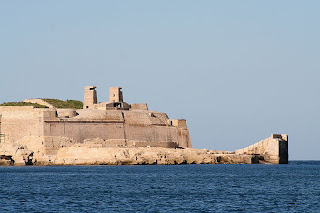Tomorrow marks 10 years since the
horrific events of September 11th, 2001 and as I reflect back on the day which
became the defining moment of the first decade of the 21st century, I cannot
remember many specific thoughts or comments, but I do recall feelings of horror
and heartbreak, and discussing with co-workers the changes this attack would
force on our nation. We responded with
horror, shock, compassion, support, and patriotism. Our nation responded with force and a dedication
to improve national security.
Today, we have
DHS, TSA, and a host of new government organizations directly tied to national
security and counter-terrorism. Security
protocols for airline travel, border crossings, access to public landmarks,
wire-tapping, public surveillance, e-mail monitoring, financial transaction
monitoring, public awareness and more have been created or strengthened and
there has been a tremendous increase in the activities directed at securing our
nation's critical infrastructure. We
have taken the war against terrorism to Iraq and Afghanistan and have taken out
Osama Bin Laden and many high-ranking leaders of the Al-Qaeda terrorist
organization.
These
heightened security protocols overall are favored by a majority of citizens,
yet are viewed by nearly all as a loss of civil liberties. A recent poll by AP-NORC conducted between
July 28th and August 15th of this year found that while a majority of the
citizens favor heightened security protocols protection of civil liberties should
maintain an equal priority with national security. I recommend everyone to read the survey
report at http://www.apnorc.org/Common/pdfs/AP-NORC-Civil-Liberties-Security-9-11-Report.pdf.
I
agree with the need for heightened security; however, I do not want an
Orwellian society where the government has knowledge of and controls every
aspect of our lives. Being a frequent traveler,
I miss the pre-9/11 levels of airport security; on the other hand, would 9/11
have occurred if our pre-9/11 airport security had been at post-9/11
levels? Within our national borders we
have not had a major terrorist incident since 9/11 even though there have been
many attempts. While the security
measures implemented over the past 10 years have encroached on our civil liberties and increased frustration and time
spent waiting in lines, they have saved lives.
Our enemies are determined to destroy our way of life, our liberties,
and our freedom. Yet, we stand, a beacon
of hope, of freedom, the “golden door” to the world!
The
past decade has been one of the toughest in our history and we are still on the
precipice of economic disaster; yet, we are a nation whose strength lies in its
citizens. Today we should remember those
who rather than passively flying to their deaths and the destruction of the US
Capital Building stood up on Flight 93 and took matters into their own
hands. We should remember the first
responders who gave their lives helping others escape the Twin Towers. We should remember all who lost their lives, spouses,
parents, children, and friends on 9/11. We
should be thankful for the first responders, law enforcement and military
personnel who put their lives on the line every day. In a speech following the 9/11 attacks,
President Bush stated “We will not tire,
we will not falter, and we will not fail.”
We should not only remember, but stir to life the feelings we each
shared during the aftermath of 9/11, the outpouring of support, the flag
waving, the patriotism, and the sense of community. We are the greatest, strongest, most humanitarian
nation on the earth. Let us tirelessly work together without faltering to successfully keep it that way for our children and future generations.
I
close with the immortal words of President Lincoln: “With malice toward none, with charity for all, with firmness in the
right as God gives us to see the right, let us strive on to finish the work we
are in, to bind up the nation's wounds, to care for him who shall have borne
the battle and for his widow and his orphan, to do all which may achieve and
cherish a just and lasting peace among ourselves and with all nations.”










